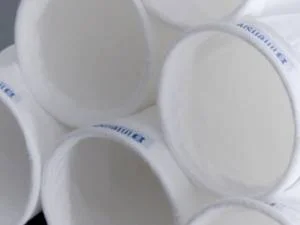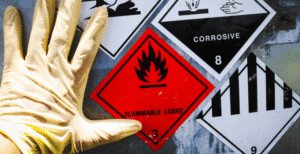What Are Wet and Dry Scrubbers?
Wet and dry scrubbers are devices used to clean air and gases. They help remove harmful substances from emissions before they go into the atmosphere. Wet scrubbers use liquid to capture particles and gases. In wet scrubbers, dirty air passes through a spray of water or a chemical solution. This liquid traps the pollutants. The clean air then moves out of the scrubber.
Dry scrubbers use a different method. They use solid materials, like powders or granules, to clean the air. In dry scrubbers, the dirty air flows through these materials. The solids stick to the pollutants and remove them from the air.
- أجهزة التنظيف الرطبة:
- Use liquid to trap pollutants.
- Clean air comes out after passing through the liquid.
- Dry Scrubbers:
- Use solid materials to capture pollutants.
- Clean air comes out after passing through the solids.
Both types of scrubbers help make the air cleaner and safer by reducing harmful emissions.
أنواع أجهزة التنظيف الرطبة
Wet scrubbers are devices that remove pollutants from gases. They use liquid to trap harmful particles. There are different types of wet scrubbers, each with unique uses and benefits.
- Spray Towers
- Spray towers use water spray to clean gases.
- They are simple and cost-effective.
- They work well for large gas volumes.
- They can remove dust and some gases.
- They are easy to maintain.
- أجهزة تنظيف فنتوري
- Venturi scrubbers use high-speed air to create a vacuum.
- They mix liquid and gas in a narrow section.
- They are good for removing small particles.
- They can handle sticky or heavy materials.
- They work best in industries like chemical manufacturing.
- Packed Bed Scrubbers
- Packed bed scrubbers have packing material inside them.
- They allow gas to flow through a wet surface.
- They are effective for removing gases like sulfur dioxide.
- They have a large surface area for better contact.
- They are useful in power plants and refineries.
Each type of wet scrubber has its own strengths. Choosing the right one depends on the specific needs of the industry.
Types of Dry Scrubbers
Dry scrubbers are important systems used to remove pollutants from gases. They help keep the air clean. There are different types of dry scrubbers, and each type has its own way of working. Two common types are dry sorbent injection and spray-dry scrubbers.
Dry sorbent injection works by adding a dry chemical powder to the gas. This powder reacts with the pollutants. It then turns them into a solid form that can be removed easily. This system is good for certain gases, like sulfur dioxide and hydrogen chloride. It is often used in power plants and industrial sites.
Spray-dry scrubbers use a different method. They spray a fine mist of liquid into the gas flow. This liquid contains chemicals that help capture the pollutants. As the mist mixes with the gas, it forms tiny droplets. These droplets then absorb the pollutants. This type is suitable for larger gas volumes and is often used in waste incineration.
Here is a simple table to compare the two types:
| ميزة | Dry Sorbent Injection | Spray-Dry Scrubbers |
| الآلية | Uses dry powder | Uses fine mist of liquid |
| Pollutants Removed | Sulfur dioxide, hydrogen chloride | Various acids and particulates |
| Typical Applications | Power plants, industrial sites | حرق النفايات |
| المزايا | Simple and cost-effective | Effective for large gas flows |
| صيانة | صيانة منخفضة | Moderate maintenance |
Each dry scrubber type has its own strengths. Choosing the right one depends on the specific needs of the situation.
Wet Scrubber vs. Dry Scrubber: A Comparative Analysis
Wet scrubbers and dry scrubbers are two types of air pollution control devices. They help remove harmful particles and gases from industrial emissions.
- كفاءة: Wet scrubbers are usually more efficient than dry scrubbers. They can capture more types of pollutants, especially gases. Dry scrubbers work well for some particles but may miss others.
- يكلف: In terms of cost, wet scrubbers can be more expensive to install and operate. They need water and may require a treatment system for wastewater. Dry scrubbers are often cheaper to set up and use less water.
- صيانة: Wet scrubbers need regular maintenance. This is because they have water systems that can get clogged. Dry scrubbers require less maintenance but still need checks to ensure they work properly.
- التأثير البيئي: Wet scrubbers can have a positive environmental impact by treating wastewater. However, they can also waste water. Dry scrubbers do not use water, which is better in areas with water scarcity.
In summary, wet scrubbers are great for efficiency and treating gases. They may cost more and need more care. Dry scrubbers are cheaper and easier to maintain but might not capture as many pollutants. Industries must choose based on their specific needs, such as the type of pollutants and their budget.
Factors Influencing the Choice Between Wet and Dry Scrubbers
Factors influencing the choice between wet and dry scrubbers include several key considerations. These factors help people decide which type of scrubber to use based on their needs.
- Pollutant Type: The type of pollutants in the gas stream matters. Wet scrubbers work best for gases that are soluble in water. Dry scrubbers are better for removing solid particles and some gases.
- Regulatory Requirements: Different areas have rules about air quality. These rules can dictate which scrubber is necessary. Some may require the use of a wet scrubber to meet specific standards.
- قيود المساحة: The amount of space available for the scrubber can impact the choice. Wet scrubbers often need more space due to their design. Dry scrubbers can fit into tighter areas.
- Operational Costs: The costs of running each type of scrubber are different. Wet scrubbers may have higher water costs and maintenance needs. Dry scrubbers may have lower costs but can require special materials.
Each of these factors plays a role in deciding whether to use a wet or dry scrubber. Understanding them helps make the best choice for the situation.
Case Studies: Successful Applications of Wet and Dry Scrubbers
In the world of air pollution control, many industries have successfully used wet and dry scrubbers. These systems help remove harmful pollutants from the air. Here are some real-world examples of companies that benefited from these technologies.
One example is a large power plant in the Midwest. This plant faced strict air quality rules. To comply, they installed a wet scrubber system. This system used water to wash away harmful gases like sulfur dioxide. After the installation, the plant saw a significant drop in emissions. They learned that regular maintenance kept the scrubber running efficiently.
Key takeaways:
- Wet scrubbers can greatly reduce harmful emissions.
- Regular maintenance is crucial for optimal performance.
Another example is a cement manufacturing company on the West Coast. This company used a dry scrubber system to control dust and other pollutants. The dry scrubber used chemicals to capture harmful particles from the air. After using this system, the company reported cleaner air around their facility. They discovered that training employees on the system improved its effectiveness.
Key takeaways:
- Dry scrubbers effectively control dust and pollutants.
- Employee training plays a key role in system performance.
A chemical plant in the South also adopted wet scrubbers to tackle volatile organic compounds (VOCs). These compounds can cause health issues. By installing wet scrubbers, the plant reduced VOC emissions significantly. The team learned that monitoring the system helped identify any issues quickly.
Key takeaways:
- Wet scrubbers are effective for reducing VOC emissions.
- Regular monitoring helps catch problems early.
These examples show how different industries can benefit from wet and dry scrubbers. Each case highlights the importance of proper installation, maintenance, and employee training in achieving success.
Innovations in Scrubber Technology
Innovations in scrubber technology are changing how industries clean the air. These advancements help reduce pollution and improve energy use. Here are some recent innovations in scrubber technology:
- Energy-efficient designs: New scrubbers use less energy. They clean air effectively while saving power. This helps companies cut costs and reduce their carbon footprint.
- Integration with renewable energy sources: Some scrubbers now work with solar or wind energy. This means they can run on clean energy instead of fossil fuels. This change makes scrubbers even more environmentally friendly.
- Smart technology: Modern scrubbers use sensors and data to improve performance. They can monitor air quality in real-time. This helps operators adjust settings for better efficiency.
- Modular systems: New scrubber designs are modular. This means they can be easily changed or expanded. Companies can adapt their scrubber systems as needed without a complete overhaul.
- Enhanced filtration materials: Recent innovations use advanced materials for better filtration. These materials capture more pollutants, leading to cleaner air output. This is important for industries that face strict air quality regulations.
- Cost-effective solutions: New scrubber technologies are becoming cheaper to install and maintain. This encourages more companies to adopt these systems for cleaner air.
- Waste recycling: Some scrubbers now recycle waste materials. This reduces the amount of waste sent to landfills and promotes a circular economy.
These innovations in scrubber technology show promise for cleaner air and a healthier planet.
Environmental and Regulatory Considerations
Scrubbers help protect the environment. They reduce harmful emissions from factories and power plants. This process makes the air cleaner. Cleaner air is better for everyone’s health. It also helps to protect nature.
Using scrubbers can help industries meet important rules set by the government. These rules are called regulatory standards. They make sure companies do not pollute too much. Compliance with these standards is important. It shows that a company cares about the environment and public health.
Here are some key environmental benefits of using scrubbers:
- Reduces Air Pollution: Scrubbers remove harmful gases from emissions.
- Improves Air Quality: Cleaner air leads to better health for people and animals.
- Protects Ecosystems: Less pollution helps keep forests, rivers, and wildlife safe.
- Supports Climate Goals: Reducing emissions helps fight climate change.
Following regulatory standards is not just about avoiding fines. It also helps build trust with customers and the community. Companies that use scrubbers show they are responsible. They play a part in keeping the planet healthy.
Choosing the Right Scrubber for Your Industry
Choosing the right scrubber for your industry is important. A scrubber helps to clean the air by removing harmful pollutants. Different industries have different needs. Here is a simple guide to help in selecting the best scrubber system.
- Identify Pollutant Types: First, know what kind of pollutants your industry produces. This could include gases, dust, or chemicals. Each type of pollutant needs a different scrubber.
- Assess Space Availability: Next, check how much space is available for the scrubber. Some scrubbers are big and need more room. Others are smaller and can fit in tight spaces.
- Determine Budget Constraints: Then, consider how much money can be spent on the scrubber. Some scrubbers are expensive, while others are more affordable. It is important to find a scrubber that fits the budget.
- Evaluate Maintenance Needs: After that, think about how much maintenance the scrubber will need. Some systems require regular checks and cleaning. Others are low-maintenance.
- Research Regulations: Lastly, check local laws and rules about air quality. Some industries must meet strict standards. The right scrubber should help meet these rules.
By following these steps, businesses can choose the right scrubber for their specific needs. Each industry has unique requirements, and careful planning helps in making the best choice.
خاتمة
Choosing the right scrubber system is very important for controlling air pollution. A scrubber system helps remove harmful pollutants from the air. It is essential to consider the type of pollutants present when selecting a scrubber system. Different systems work better for different types of pollutants.
Effective air pollution control requires a good understanding of the specific needs of a facility. The right scrubber can help meet environmental regulations and improve air quality. This can lead to a healthier environment for everyone.
In summary, selecting the right scrubber system is crucial for effective air pollution control. It ensures that harmful substances are removed from the air, protecting both people and the environment.


